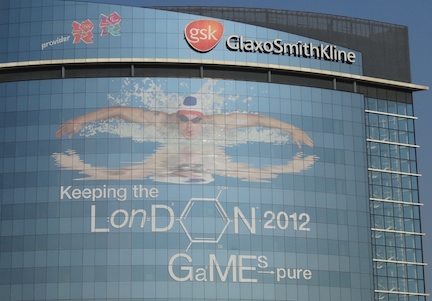GlaxoSmithKline's Anti-Doping Campaign for the London 2012 Olympics
Welcome! As you walk through this website, I will provide a semiotic and discursive analysis of GlaxoSmithKline's anti-doping campaign for the London 2012 Summer Olympics.

With their global headquarters located in Brentford, London, England, GlaxoSmithKline, or GSK, was geographically in a great position to be part of the London 2012 Summer Olympic games. As a global healthcare company devoted to the research and development of innovative pharmaceuticals, vaccines, and consumer healthcare, GSK was selected as the Official Laboratory Service Provider for the London games. GSK CEO, Andrew Witty, boasted that the company was "immensely proud to be a partner of the London 2012 Olympic and Paralympic Games" (GSK). To show their pride and role in making the 2012 Olympics the cleanest games possible, the company released a campaign of advertisements that each featured an athlete and an anti-doping statement. Using several methodologies discussed in class, I will provide a discursive and semiotic analysis of the six images of the campaign. The analysis will explain why each image was designed the way it was individually and as part of the whole campaign and its significance in demonstrating how the ads convey a sense of power from the athlete.
The Core of the Campaign
GSK. "2012 Provider, GSK, Unveils Sign Celebrating Its Scientific Contribution to the
Games." GlaxoSmithKline (GSK) Shows Sign of Things to Come at London 2012 Olympic and
Paralympic Games. N.p., 7 Sept. 2011. Web. 21 Apr. 2014.
a class taught by Bob Bednar in the Communication Studies Department at Southwestern University
